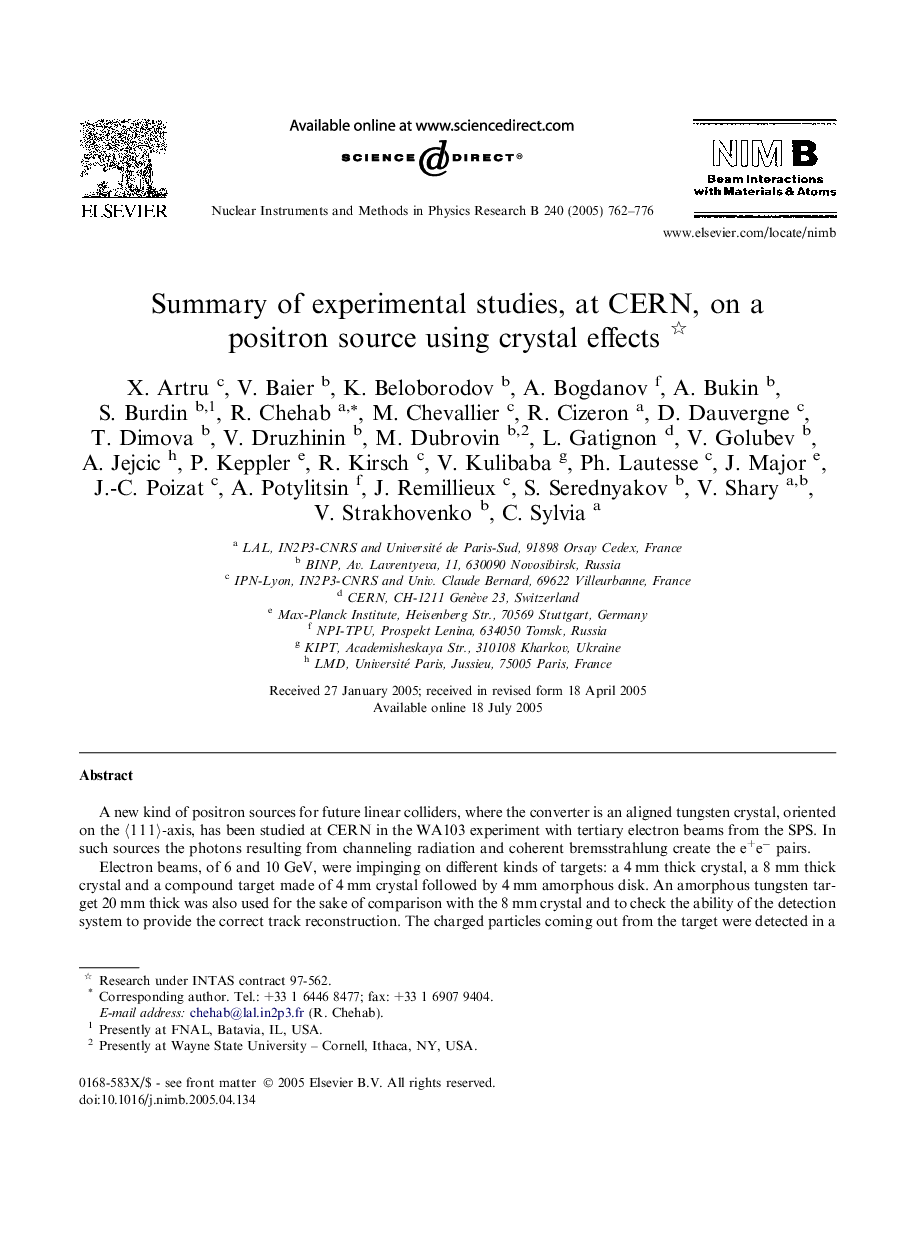| Article ID | Journal | Published Year | Pages | File Type |
|---|---|---|---|---|
| 10675796 | Nuclear Instruments and Methods in Physics Research Section B: Beam Interactions with Materials and Atoms | 2005 | 15 Pages |
Abstract
Electron beams, of 6 and 10 GeV, were impinging on different kinds of targets: a 4 mm thick crystal, a 8 mm thick crystal and a compound target made of 4 mm crystal followed by 4 mm amorphous disk. An amorphous tungsten target 20 mm thick was also used for the sake of comparison with the 8 mm crystal and to check the ability of the detection system to provide the correct track reconstruction. The charged particles coming out from the target were detected in a drift chamber immersed partially in a magnetic field. The reconstruction of the particle trajectories provided the energy and angular spectrum of the positrons in a rather wide energy range (up to 150 MeV) and angular domain (up to 30°). The experimental approach presented in this article provides a full description of this kind of source. A presentation of the measured positron distribution in momentum space (longitudinal versus transverse) is given to allow an easy determination of the available yield for a given momentum acceptance. Results on photons, measured downstream of the positron detector, are also presented. A significant enhancement of photon and positron production is clearly observed. This enhancement, for a 10 GeV incident beam, is of 4 for the 4 mm thick crystal and larger than 2 for the 8 mm thick crystal. Another important result concerns the validation of the simulations for the crystals, for which a quite good agreement was met between the simulations and the experiment, for positrons as well as for photons. These results are presented after a short presentation of the experimental setup and of the track reconstruction procedure.
Keywords
Related Topics
Physical Sciences and Engineering
Materials Science
Surfaces, Coatings and Films
Authors
X. Artru, V. Baier, K. Beloborodov, A. Bogdanov, A. Bukin, S. Burdin, R. Chehab, M. Chevallier, R. Cizeron, D. Dauvergne, T. Dimova, V. Druzhinin, M. Dubrovin, L. Gatignon, V. Golubev, A. Jejcic, P. Keppler, R. Kirsch, C. Sylvia,
